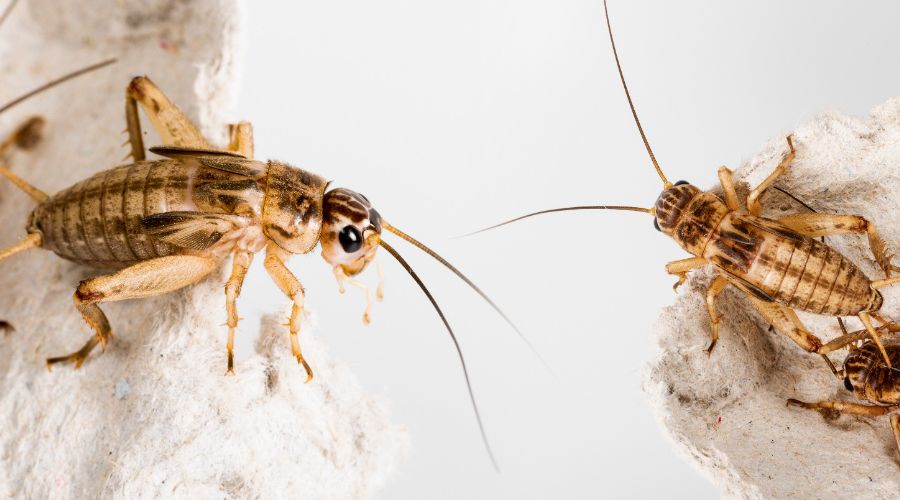What do crickets eat in Dallas anyway? These fascinating creatures are often overlooked, but understanding their diet and behavior can provide valuable insights into the local ecosystem.
Crickets are known for their loud chirping, interestingly produced when males rub their front wings together to attract females. While house crickets don’t pose a health risk to humans, they can cause damage to property, specifically clothing, carpets, and areas covered in fabric.
In this blog post, we’ll examine the dietary habits of crickets in Dallas and how it affects their environment. Furthermore, we will explore signs of a cricket infestation – an essential aspect for homeowners who may encounter these insects within their property.
By understanding what crickets eat in Dallas, you will learn about these intriguing insects and how to manage them effectively should they become unwelcome guests in your home or garden.
What Are Crickets?
Crickets belong to the order Orthoptera, which also includes grasshoppers and locusts. Many mistakenly assume crickets are akin to grasshoppers, which is understandable. These small, cylindrical insects possess round heads and long antennae.
You may have heard crickets chirping at night, which they make by rubbing their wings together. This sound is made by the males, which chirp to attract females. Crickets can be found around the world on every continent except Antarctica. They live in varied habitats, particularly the tropics, and are well-adapted to most environments.
You might be wondering what attracts these creatures to our homes. One reason could be that Dallas provides an ideal environment for them with its warm climate and abundance of vegetation to feed on.
What Do Crickets Eat?
Crickets are omnivorous creatures, meaning they feed on both plants and meat. Their diet largely depends on their surroundings, so if they find their way into your yard or home, these pests can cause significant damage to your crops and belongings.
In gardens, crickets consume various plant parts such as stems and seeds from corn, grasses, barley, fruits, wheat, or vegetables. With a heavy infestation of crickets in your garden area, these pests can destroy numerous rows of seedlings within just one day.
- Outdoor Diet: In the outdoors or yards with vegetation available for consumption
- Indoor Diet: Inside homes where they may eat drapes, clothing, furniture, stored grains, cereals, plastic bags, and cardboard items
Their strong jaws and teeth enable them to chew through plastic bags and cardboard boxes containing stored grains or cereals. However, when food is scarce for these insects, it’s not uncommon for them to resort to cannibalistic behavior by eating weaker colony members.
Crickets consume various edibles, ranging from vegetation to other bugs to synthetic materials. Therefore, it is important to be aware of the signs of a cricket infestation to take steps toward preventing them from taking over your home or business.
Signs of a Cricket Infestation
If you think crickets may have infiltrated your abode, it’s essential to recognize the signs of a problem. House crickets are drawn to warm, moist environments within structures and can cause damage to fabrics and other materials.
Here are some common indicators of a cricket infestation:
- Presence of Crickets in Your Home: The most obvious sign is seeing crickets inside your house. These insects may be found hiding in dark corners or crawling on walls.
- Nocturnal Chirping Sounds: Male house crickets produce a distinctive chirping noise by rubbing their front wings together as part of their mating ritual. This “calling song” attracts females and typically occurs at night since they’re nocturnal creatures. If you hear this sound regularly, it could indicate an infestation.
- Damaged Fabrics: Chewed fabric is another sign that you might have a cricket problem on your hands. Inspect clothing, drapes, and furniture upholstery for any signs of damage caused by these pests’ mandibles marks along chewed edges, often visible with magnification (Pest Magazine). These marks are much less than 1 mm wide.
If you notice any combination of these signs around your property, don’t hesitate to take action against the invading critters. Contact Romney Pest Control to eliminate the problem swiftly and effectively before more significant damages occur.




